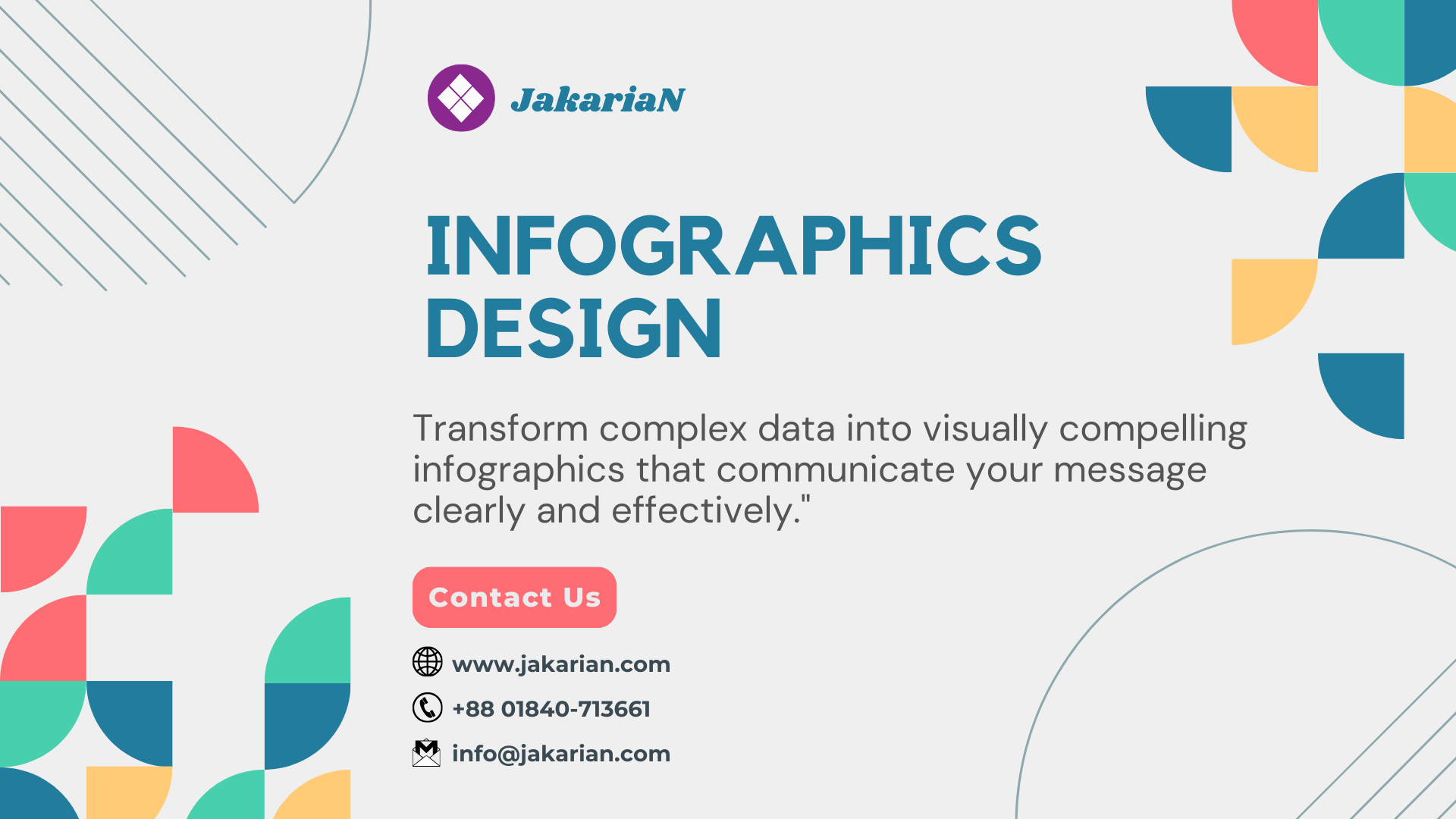Infographics

Infographics are visually appealing, data-driven designs that communicate complex information in a clear, concise, and engaging manner. They combine text, images, charts, and icons to transform detailed data or concepts into digestible visual content. Infographics are widely used for educational, marketing, and storytelling purposes, allowing businesses and organizations to present data, statistics, processes, or key insights in an engaging format that resonates with their target audience. Key components of Infographics include:
1. Data Visualization:
- Converting raw data, statistics, and information into visually engaging charts, graphs, and diagrams. This simplifies complex data and helps the audience grasp key points at a glance.
2. Storytelling with Visuals:
- Crafting a narrative using visuals and structured information flow. Infographics guide the viewer through a logical progression of ideas, making complex subjects easier to understand.
3. Hierarchical Design:
- Organizing information in a clear, easy-to-follow structure. Key points and important data are emphasized, while less critical information is de-emphasized, ensuring that viewers focus on the most relevant content.
4. Use of Icons and Illustrations:
- Incorporating icons, illustrations, and symbols to visually represent ideas and concepts. This adds visual appeal and helps break up text-heavy sections, making the infographic more accessible.
5. Custom Graphics and Imagery:
- Designing custom graphics, such as unique charts, graphs, and visual elements, that are tailored to the topic and the brand’s style. These elements enhance the infographic’s uniqueness and clarity.
6. Clear and Concise Information:
- Stripping away unnecessary details and focusing on delivering the core message in the simplest way possible. Brevity and clarity are essential to ensure the infographic is engaging and easy to comprehend.
7. Branding and Design Consistency:
- Incorporating brand colors, fonts, and logos into the infographic to ensure consistency with the company’s visual identity. This strengthens brand recognition while maintaining a professional appearance.
8. Data Sources and Accuracy:
- Ensuring that all data presented is accurate and sourced from credible references. Reliable data builds trust with the audience and lends authority to the infographic.
9. Educational and Informational Content:
- Using infographics to explain processes, concepts, or how-to guides. These types of infographics are particularly effective for educational purposes or training materials.
10. Interactive Elements (Optional):
- Incorporating interactive features such as clickable elements, animated charts, or expandable sections in digital infographics, enhancing engagement and allowing users to explore data in-depth.
11. Shareability:
- Infographics are designed to be highly shareable, making them ideal for social media, blogs, websites, and email marketing campaigns. Their visually compelling format encourages users to share them with their networks.
Infographics are an essential tool for visually communicating complex information in an easy-to-understand, engaging format. They not only enhance audience comprehension but also improve the likelihood of information retention, making them a powerful asset in content marketing, education, and data presentation.
Compare Our Packages
| No | Package | Basic | Standard | Premium |
|---|---|---|---|---|
| 01 | Description | |||
| 02 | Title optimization | |||
| 03 | ||||
| 04 | ||||
| 05 | ||||
| 06 | ||||
| 05 | ||||
| 06 | ||||
| 07 | ||||
| 08 | ||||
| 09 | ||||
| 10 | ||||
| 11 | ||||
| 12 | ||||
| 13 | ||||
| 14 | ||||
| 15 | ||||
| 16 | ||||
| 17 | ||||
| 18 | ||||
| 19 | ||||
| 20 |





